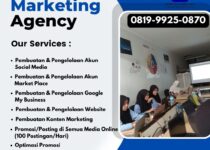Navigating the Digital Gatekeeper: Optimizing Your Resume for Applicant Tracking Systems
In today’s competitive job market, submitting an application is often just the first step in a complex, digitally-mediated process. Many job seekers experience the frustration of sending out numerous resumes only to be met with silence. A common, yet often overlooked, reason for this is the Applicant Tracking System (ATS) — sophisticated software used by a vast majority of employers to filter and rank candidates before a human eye ever sees their application. If your resume isn’t tailored to pass these digital sentinels, your qualifications might go unnoticed.
The Unseen Hurdle: Understanding Applicant Tracking Systems
Applicant Tracking Systems are software applications that automate the recruitment process by collecting, scanning, sorting, and ranking job applications. For organizations, especially large enterprises that can receive hundreds or even thousands of applications for a single opening, ATS offers an efficient way to manage volume. These systems parse resume content, searching for specific keywords, skills, experiences, and qualifications that align with the job description. The system then scores and ranks candidates, presenting hiring managers with a pre-screened pool.
The prevalence of these systems is undeniable. Estimates suggest that nearly 99% of Fortune 500 companies utilize ATS, and their adoption is widespread across businesses of all sizes. The challenge arises when highly qualified candidates are inadvertently filtered out because their resumes are not formatted or written in an ATS-compatible manner. As AI continues to integrate into hiring, with projections indicating around 65% of employers planning to use AI for candidate rejection in the near future, understanding ATS optimization is no longer optional — it’s essential.
Five Essential Strategies for an ATS-Compliant Resume
To ensure your resume successfully navigates the ATS and reaches a human reviewer, consider these five critical optimization strategies:
- Embrace Standard Formatting and Structure:
While a visually creative resume might appeal to a human, ATS software prioritizes clarity and standard conventions. Opt for a clean, traditional resume layout with clear section headings like “Work Experience,” “Education,” and “Skills.” Use common, easily readable fonts such as Arial, Calibri, or Times New Roman, maintaining a font size between 10 and 12 points. Avoid using tables, columns, images, charts, or special characters, as these can confuse the ATS and cause important information to be misread or omitted. Consistency in formatting, spacing, and structure is paramount. - Prioritize Main Body Content (Avoid Headers & Footers):
Information placed in the header or footer sections of a document can sometimes be overlooked or incorrectly parsed by certain ATS platforms. To prevent critical details like your contact information from being missed, ensure all essential data — name, phone number, email address, and relevant links — is within the main body of the resume. Similarly, crucial details like job titles and employment dates should be clearly presented in standard sections, as ATS typically reads content in a linear, top-to-bottom fashion. - Strategic Keyword Integration:
One of the primary functions of an ATS is to scan for keywords relevant to the job posting. Carefully review the job description, identifying specific skills, responsibilities, and qualifications mentioned. Incorporate these exact keywords and phrases naturally throughout your resume, particularly in your experience and skills sections, provided they accurately reflect your capabilities. For instance, if a role requires “project management” or “data analysis,” ensure these terms appear. However, avoid “keyword stuffing” — the practice of unnaturally listing keywords out of context — as this can be detrimental. A 2025 Jobscan report indicated that 99.7% of recruiters leverage keyword filters, underscoring their importance. - Enhance Readability with Bullet Points:
Bullet points improve scannability for both ATS and human recruiters. They help break down complex information into digestible segments, making it easier for the software to parse distinct achievements and responsibilities. When detailing your experience, use action-oriented bullet points to highlight quantifiable accomplishments. For example, instead of “Responsible for sales,” use “Increased quarterly sales by 15% through targeted marketing initiatives.” Measurable results add significant weight to your claims. - Select the Correct File Format:
Submitting your resume in an incompatible file format is a common pitfall. While PDFs maintain formatting well and appear professional, not all ATS versions can accurately parse them. Unless the job application explicitly requests a PDF, the safest option is generally to submit your resume as a Word document (.doc or .docx). Most ATS platforms are designed to read Word documents effectively, increasing the likelihood of accurate data extraction.
Conclusion: Paving Your Path to the Interview
With reports suggesting that up to 70% of resumes are initially rejected by ATS software, optimizing your document for these systems is a crucial investment in your job search. By diligently applying these five strategies — focusing on standard formatting, appropriate content placement, targeted keyword usage, clear bullet points, and correct file submission — you significantly enhance the probability of your resume successfully passing the initial digital screening.
For further expert guidance and resources on crafting a resume that truly stands out, visit Zrafted.
Taking the time to create an ATS-friendly resume can be the determining factor in landing your application in the hands of a hiring manager and securing that coveted interview.

